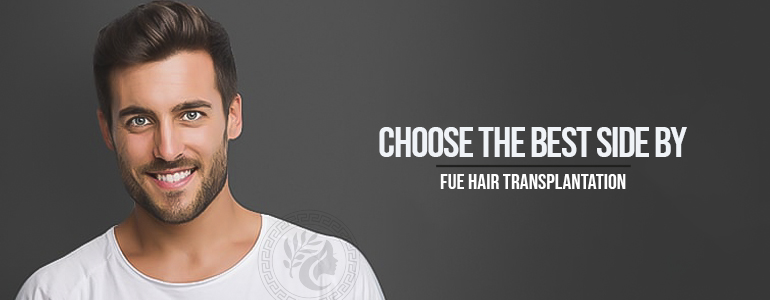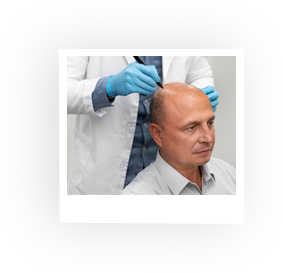FOLLICULAR UNIT EXTRACTION
In the hair transplant procedure there are two primarily technique being used: FUT method (follicular unit transplantation) and FUE method (follicular unit extraction). The FUT method involves removing a small strip of tissue from the back of your head from which follicles will be extracted. The follicles are harvested from the strip before being implanted individually to the recipient area. This technique results in a linear scar in the back of the head. FUE is the modern technique of hair transplantation and this method is more advanced. FUE is a method that involves extracting individual hair follicles from a donor part of the body which is usually the back and the sides of the head. These individual follicles are then implanted in the recipient area. At our clinics we offer different methods of FUE and we have one of the most experienced SURGEONS.
FUE Hair Transplant Process
At GLOW AND GROW, hair transplantation candidates are carefully assessed and analysed by our professional medical team prior to the surgery. Our surgeon will design a surgical plan for you which lays out where your new hairline will start and its shape WITH HAIR INE DESIGNER. Your new hairline is designed to complement your features and to give you a natural and aesthetic outcome. Your preferences and wishes will also be taken into consideration. Next, the donor area is established, which is usually located on the back of the head. It takes approximately one hour to prepare the patient. Photos of the patient are taken, and the hair is shaved prior to the procedure. Afterwards, donor site is anesthetized with local anaesthetics. FUE hair transplant is a three-stage procedure which involves extraction of follicles, creation of incisions and implantation;
1. Extraction
The hair grows in natural groupings of usually one to four hairs that are called graft units. During the FUE procedure, individual follicles are being removed one by one using a PUNCHES under local anaesthesia. The extraction of the follicles is performed with help of a micro surgical extraction tool that is less than one millimetre in diameter. The extractor places the tool over the hair and align with the direction of the hair growth, then insert it and creates a round incision. The graft is then being separated from the surrounding tissue and extracted directly from the scalp. It is of upmost importance to use extreme surgical precision to ensure the best possible growth. At this stage, the patient is laying on the face on a special bed and the medical team ensures that the position is comfortable. This part of the procedure takes 1 -2hours, depending on the number of grafts to be extracted.
2. Recipient site incisions
Small incisions are created on the recipient area using a small blade, under local anesthesia. The follicles are then placed into the pre-made incisions. The incision part is the most important stage in the success of a hair transplantation due to the fact that incisions determine the angle, direction and density of hair follicles to be implanted. Thus, extremely high precision and skills are required by the surgeon. While the surgeon is performing the incisions in the recipient area, the already extracted follicular units is placed in a storage solution to prevent damage to the follicles. This phase of the procedure takes between 40-60 minutes, in which the patient is lying on his back.
3. Implantation
Finally, the follicles are being placed carefully into the pre-made incisions. Hair follicles should be placed at the skin-hair angle of 40-45 degrees and at the right direction of natural hair growth. If the follicles are transplanted perpendicular to the scalp, it will result in an unnatural pluggy look. Moreover, it is not recommended to implant multiple follicles at the very front line, as this would create an unnatural appearance. Multiple grafts are placed in the upper and posterior regions of the head. It will take 2 – 3 hours to complete the implantation, depending on the number of grafts.





